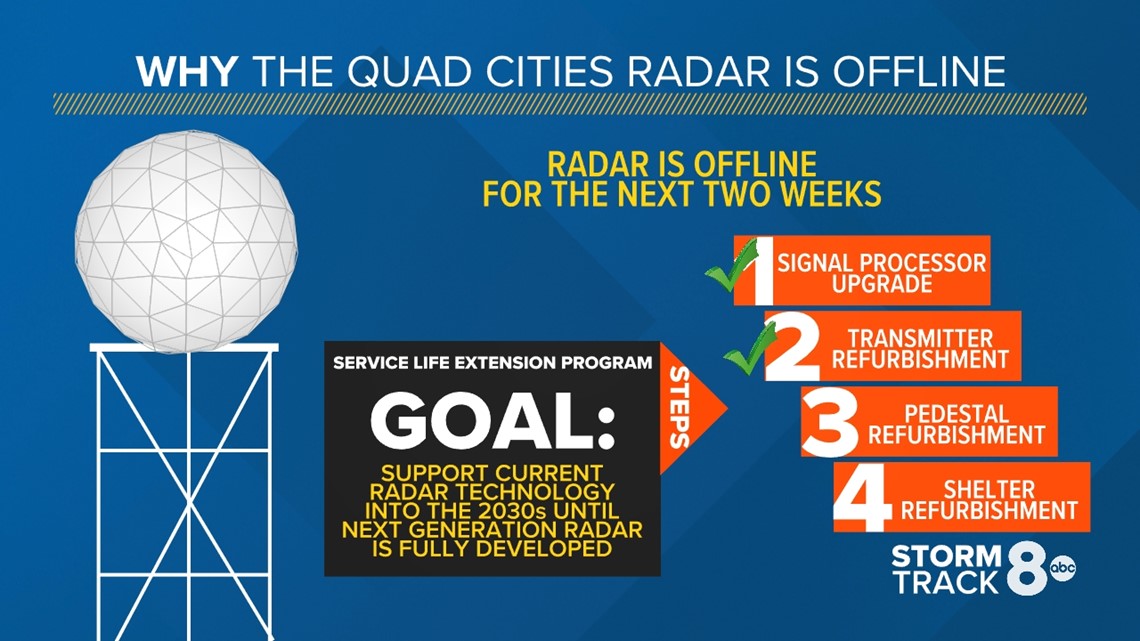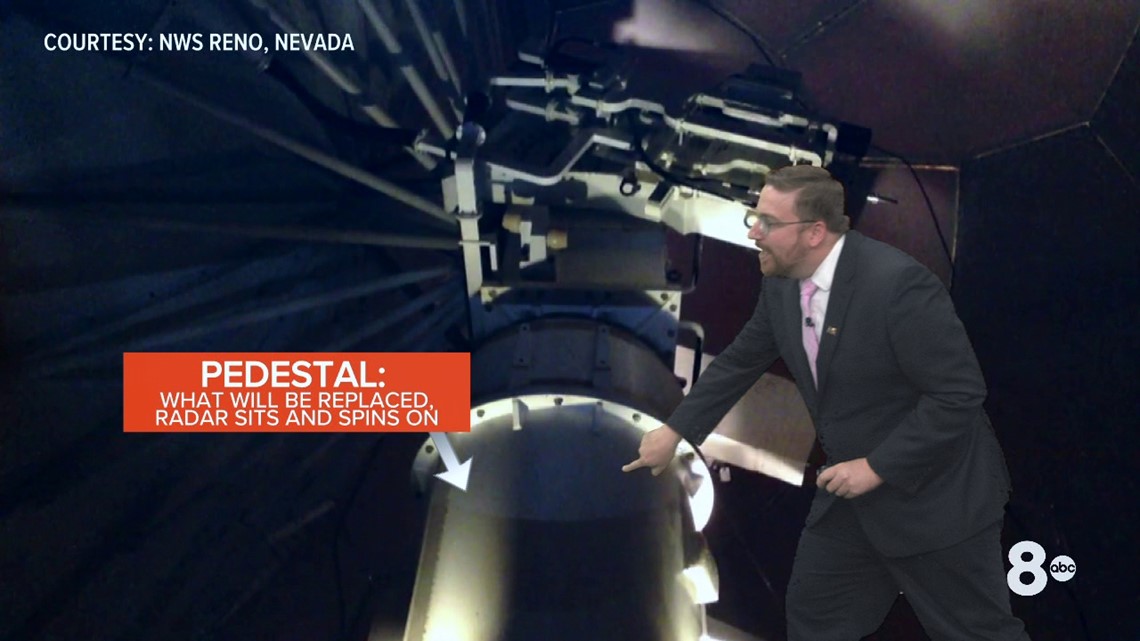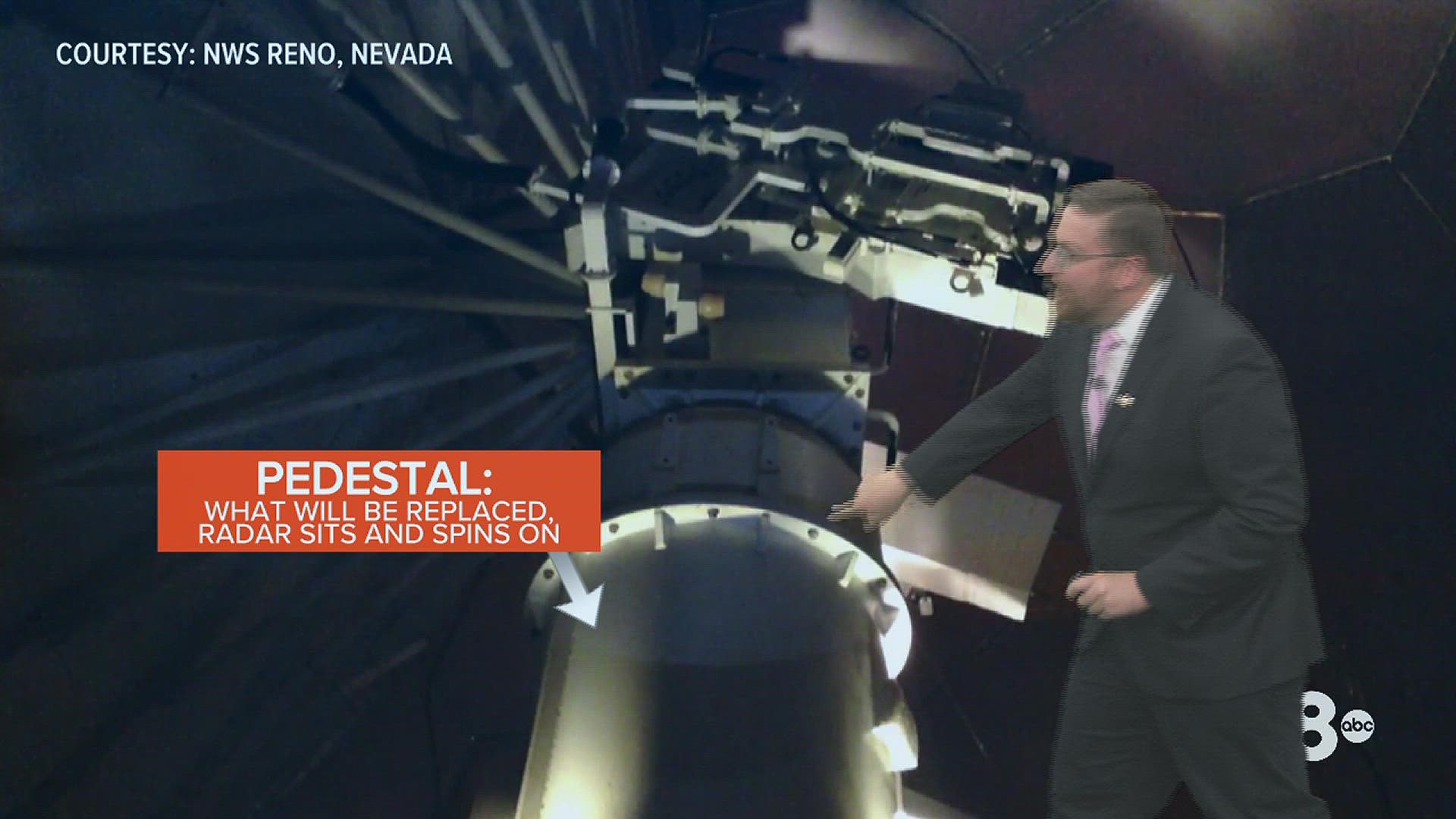DAVENPORT, Iowa — Spinning, scanning and tracking, the Doppler radar located at the National Weather Service office in Davenport, Iowa, has a fairly robust job to do. Rarely taking a day off, the radar is constantly scanning the skies picking up snow, rain, and thunderstorms are located.
Normal wear and tear become a big part of this piece of equipment during its lifespan. That's why NOAA has created a Service Life Extension Program to help rehabilitate the radars across the nation to extend their lives well into the 2030s.
Originally developed in 1988, our current radar network has undergone numerous upgrades as technology continues to evolve. The next generation of weather radar, known as phased array radar, is still under development and testing. A timeline regarding possible deployment has not yet been determined.


The project involves four different phases. Two of these have already been completed here in the Quad Cities, including the signal processor upgrade and transmitter refurbishment. Essentially, the "brains" of the operation have been upgraded. What happens now involves the pedestal refurbishment.


This is the most time-consuming step because the radar dome itself has to be removed, along with the pedestal housed under the dome. This process is expected to take up the majority of the two-week work window.
Once this upgrade is complete, the radar will be brought back online and resume normal operations.
In the meantime, surrounding radars will provide some coverage for our region as this work continues. These radars will be scanning at heights a bit greater than what our local radar here scans. This means if we get severe weather during this time, weather spotters will play a critical role in relaying any damaging weather that's being observed.
Have a question that you would like me to answer in a future Ask Andrew segment? Click here!

